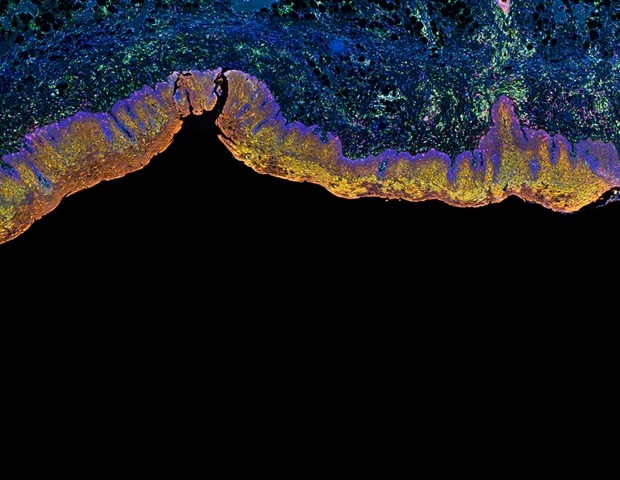Could C1orf122 Be the Key Prognostic Marker for Liver Cancer?

Published: 2025-09-12 02:44:00 | Category: Uncategorized
This article explores the critical role of chromosome 1 open reading frame 122 (C1orf122) in hepatocellular carcinoma (HCC), the most prevalent form of liver cancer. Recent research indicates that C1orf122 not only contributes to the progression of HCC but may also serve as a valuable prognostic marker, highlighting its potential as a therapeutic target in liver cancer treatment.
Last updated: 27 October 2023 (BST)
Key Takeaways
- C1orf122 is linked to poor prognosis in HCC patients.
- Overexpression of C1orf122 promotes cancer cell growth and migration.
- C1orf122 interacts with SRPK1, revealing a potential therapeutic pathway.
- The protein influences key cellular processes such as apoptosis and epithelial-to-mesenchymal transition.
- Research highlights the importance of C1orf122 as a biomarker for HCC diagnosis and prognosis.
Understanding Hepatocellular Carcinoma (HCC)
Hepatocellular carcinoma (HCC) is a major health concern, being the third leading cause of cancer-related deaths worldwide. HCC primarily arises in the context of chronic liver disease, often linked to factors such as hepatitis B and C infections, alcoholic liver disease, and non-alcoholic fatty liver disease. The multifactorial nature of HCC’s development makes it crucial to understand the molecular mechanisms that drive its progression, thus paving the way for effective diagnostics and therapies.
The Role of C1orf122 in Cancer
Research into C1orf122 has uncovered its significant role in various malignancies, including HCC. While it is established that overexpression of C1orf122 correlates with HCC progression, the precise mechanisms behind its oncogenic activity remain to be fully elucidated. Recent investigations have provided insights into how C1orf122 contributes to cancer cell survival and proliferation.
Recent Findings on C1orf122 and HCC
A comprehensive study conducted by researchers from Harbin Medical University and Chongqing Medical University analysed C1orf122’s role in HCC using data from The Cancer Genome Atlas (TCGA). This pan-cancer analysis showed that C1orf122 expression levels were significantly higher in HCC tissues compared to normal liver tissues. Furthermore, patients exhibiting elevated levels of C1orf122 had poorer overall survival rates, indicating its potential as an independent prognostic marker in HCC.
Experimental Validation of C1orf122 Functions
The researchers employed various experimental techniques to validate their findings. They conducted knockdown experiments on HepG2 and HuH-7 cell lines—common models for studying liver cancer. Results showed that silencing C1orf122 led to a pronounced decrease in cell viability and proliferation. Conversely, overexpression of C1orf122 enhanced these cellular functions.
Mechanisms of Action: How C1orf122 Influences HCC
To delve deeper into the mechanisms at play, the study revealed that C1orf122 promotes cell growth by inhibiting apoptosis. This was evidenced by a reduction in pro-apoptotic markers such as Bax and cleaved-caspase-3 when C1orf122 was overexpressed, alongside an increase in anti-apoptotic markers like Bcl-2. The implication is clear: C1orf122 helps cancer cells evade programmed cell death, contributing to tumour survival and growth.
C1orf122 and Epithelial-to-Mesenchymal Transition (EMT)
Another critical aspect of C1orf122's role in HCC involves its influence on epithelial-to-mesenchymal transition (EMT). EMT is a process where epithelial cells gain migratory and invasive properties, often associated with cancer metastasis. The study documented increased expression of EMT markers—N-Cadherin, Vimentin, Slug, and Twist1—following C1orf122 overexpression. This suggests that C1orf122 not only supports tumour growth but also facilitates cancer spread.
Key Pathway Involvement: SRPK1 and PI3K/AKT/GSK3β
The intricate pathways through which C1orf122 exerts its effects were further elucidated in the study. The researchers found that C1orf122 interacts with serine/arginine-rich protein kinase 1 (SRPK1). This interaction is crucial because it mediates the phosphorylation of SRPK1 at the Thr601 site via mTOR kinase. This phosphorylation subsequently activates the PI3K/AKT/GSK3β signalling pathway, a well-known cascade involved in cell survival, growth, and proliferation.
Implications for HCC Treatment and Diagnosis
The findings underscore the potential of C1orf122 as both a diagnostic and therapeutic target in HCC. Given its role in promoting tumour growth and its association with poor patient outcomes, C1orf122 could be a valuable biomarker for early detection, as well as a target for novel treatment strategies aimed at inhibiting its function. Targeting the SRPK1-PI3K/AKT/GSK3β axis presents a promising avenue for developing new therapies for HCC.
Conclusion
In summary, the study highlights the pivotal role of C1orf122 in the pathogenesis of hepatocellular carcinoma. By promoting cell proliferation, inhibiting apoptosis, and facilitating EMT, C1orf122 emerges as a crucial player in HCC progression. These insights not only enhance our understanding of liver cancer biology but also provide a foundation for future research aimed at developing targeted therapies and improving prognostic assessments in HCC patients. As research continues, the potential for C1orf122 to transform the landscape of HCC treatment grows ever more promising.
FAQs
What is hepatocellular carcinoma (HCC)?
Hepatocellular carcinoma (HCC) is the most common type of primary liver cancer, typically arising in individuals with underlying liver diseases. It is associated with a high mortality rate and often develops as a result of chronic conditions such as hepatitis and cirrhosis.
What role does C1orf122 play in liver cancer?
C1orf122 has been implicated in the progression of hepatocellular carcinoma by promoting cell growth, inhibiting apoptosis, and facilitating metastasis through its influence on key signalling pathways.
How can C1orf122 be used in HCC treatment?
C1orf122 may serve as a target for new therapies aimed at inhibiting its function, potentially improving outcomes for HCC patients. Additionally, it could be a valuable biomarker for early diagnosis and prognosis in liver cancer.
What are the implications of high C1orf122 expression?
High expression levels of C1orf122 in HCC tissues are associated with worse overall survival rates, suggesting that it may serve as an independent prognostic marker for assessing patient outcomes.
What future research is needed regarding C1orf122?
Future research should focus on elucidating the precise mechanisms through which C1orf122 influences HCC, as well as exploring its potential as a therapeutic target and biomarker in clinical settings.



